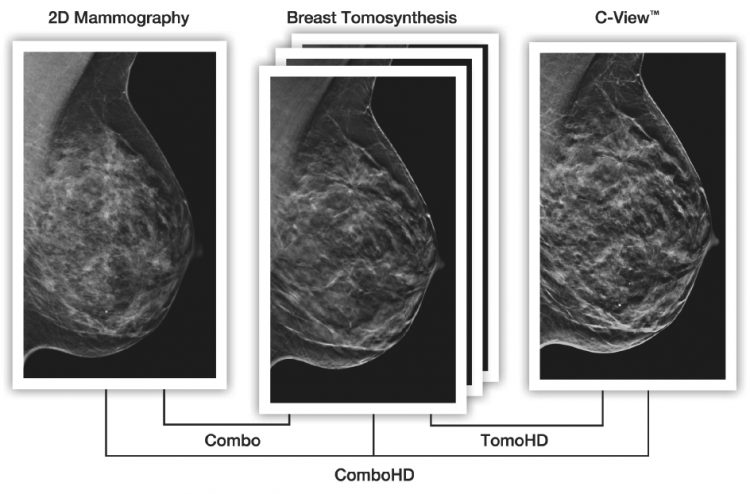Digital Mammography & 3D Tomosynthesis
A mammography/mammogram is an X-ray examination of the breasts.
Breast tomosynthesis (3D mammography) is a newer advanced technology that has been designed to overcome the limitations and challenges associated with conventional 2D mammography by reducing tissue overlap leading to an increase in sensitivity and specificity of breast cancer detection.
The breast tomosynthesis examination uses low-dose X-rays, and can be carried out as a part of a diagnostic study at the same time as the 2D mammogram. It does, however, require newer and specialised equipment. Images are taken at varying angles, and the images are then reconstructed using a computer into thin slices of 3D volume for review by the radiologist. The thin slices allow the radiologist to view the structures of the breast layer by layer, eliminating the effects of overlapping of the breast tissue.

Detects
up to 41% more invasive breast cancers
Reduces
recall rates by 15-40% compared with traditional 3D mammography alone.
Earlier detection
than ever before and less anxiety about unnecessary further testing
Preparation
No body cream or deodorant to be applied in underarm and breast area prior to test. Bring previous scans (if any) for comparison.
Pregnant?
It is important that you tell your own doctor and staff at The Cross Radiology if there is any chance you might be pregnant. This is important information, as it will make a difference in the way the X-ray is carried out or a different test altogether might be required. Your safety and that of your unborn child is the number one priority.
Upon Arrival
You will need to complete a Mammography questionnaire, in regards to your medical history.
You may also be asked to remove your hairclips, earrings, pins, chains or other items of jewellery before the examination, as these can sometimes interfere with the X-Ray.
You will be required to change into gown.
During the Scan
Breasts will be put, one at a time, between two special plates and compressed (pressed down) between the plates by the X-ray machine for a few seconds while X-rays are taken. During a breast tomosynthesis examination, the X-ray arm sweeps in an arc over the breast. While the compression may be uncomfortable and perhaps painful, it lasts only seconds. Without compression, the images would be blurry, which makes it hard to see any abnormally. Compression also reduces the amount of radiation required for the mammogram.
Standard mammography takes between 10 to 15 minutes. Sometimes extra views are taken, which will take longer. For breast implants, it will take 30 minutes, because it takes more time to make sure clear images are taken.
Results
Our experienced radiologist looks at the images and sends the results to your treating doctor. You need to discuss the results with your doctor.
Risks
Like all X-rays, having a mammogram exposes you to some radiation, but only a small amount. Such risk is far outweighed by the benefit of early detection of breast cancer, significantly reducing the death rate from the disease and providing better treatment options.
Service available at:
Resources
By helping with daily activities, our caregivers enable clients to maintain their normal daily routines. Hourly home care allows clients to use our caregivers on an hourly or as-needed basis.



